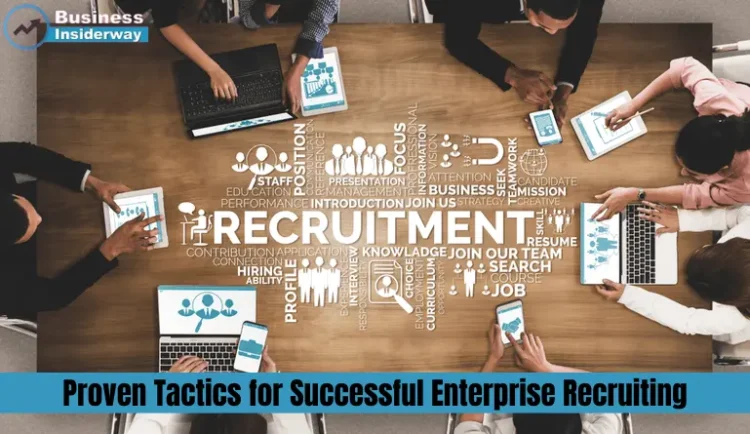Enterprises have many positions they need to fill all the time. That means a lot of interviews with candidates and hiring managers.
Staying on top of industry trends and developments can help you fine-tune your recruitment strategies and make the best hires. For example, if you notice a specific role is taking longer to hire for, focus on recruiting strategies that will work for this position.
Targeted Advertising
Targeted advertising to recruit top talent is critical in reducing time-to-hire and costs per hire. This includes creating a social media presence that aligns with the employer brand and resonates with job candidates.
This can be achieved by posting video interviews with current employees and featuring behind-the-scenes glimpses of company culture. It also involves researching and selecting reputable job boards that cater to the target audience.
In addition to setting goals, targeted enterprise recruiting strategies often use pay-for-performance advertising models that only spend money on clicks that lead to quality applicants (you can’t hire clicks). It also helps to have a well-defined candidate persona to ensure that you’re only marketing to qualified candidates. This is especially important for hard-to-fill positions. A persona-based approach can also help increase your candidate pool by identifying passive candidates.
Micro-Targeting
Recruitment can be time-consuming and costly for midsize to large enterprise organizations. Especially since turnover rates are high in these types of companies, bringing on top talent requires efficient and effective strategies.
Using targeted advertising can be a crucial strategy to streamline your hiring process. You can target your ads based on location, job title, industry experience, and other factors. This will help you reach qualified candidates for your open positions and save you from wasting resources on recruiting efforts.
Another excellent option for high-volume recruiting is to utilize employee referral programs. This allows you to tap into a pool of talent that already connects with your organization and can be an excellent source for finding candidates who are culturally aligned and willing to commit to your company.
Partnering with Colleges and Universities
Recruiting candidates from universities and colleges can expand an organization’s candidate pool. It also helps organizations find entry-level talent with a fresh perspective. A candidate from outside an industry won’t suffer from “industry fatigue” and can take more creative approaches to solving problems and meeting challenges.
A successful partnership between an enterprise and a university requires a clear business case and the assignment of a joint, agile team to oversee engagement efforts. Creating a template for future partnerships can help streamline and scale these efforts.
Many universities are rethinking their traditional relationships with companies by exploring new models for collaboration. Those who engage with their university partners effectively can reap the rewards, including improved hiring numbers and increased revenue.
High-Volume Sourcing
When high-volume recruiting drives are required, it can be easy to lose track of the quality of each hire. A data-driven recruitment technology solution can help sourcing teams meet their hiring goals without compromising on the talent they need to grow their business.
Recruiting is expensive, and the charges are magnified when many candidates need to be screened and vetted. Measuring the cost per hire can effectively see where improvements are needed in your process. Another metric worth tracking is turnover per source. This can give recruiters an idea of which channels provide quality hires and which deliver people who don’t stay long. By analyzing this data, recruiters can put more resources into the channel performing well and cut back on those not doing so well.
Social Media and SEM Campaigns
When hiring for critical positions, companies can leverage recruitment marketing to drive more targeted searches, reduce time-to-hire, and cut sourcing costs. Recruitment marketing gleans best practices from proven digital marketing strategies and applies them to talent acquisition.
When engaging candidates, the most effective campaigns are authentic and creative. Recruiters must understand their target audience, where they hang out online, and how they communicate.
Tapping into trending social media platforms is a great way to do this. These channels are ideal for sharing employee stories and showcasing your company culture. It’s also an excellent place to promote your employer brand and engage active job seekers through a dynamic nurture strategy.














